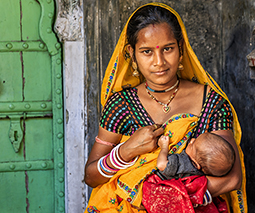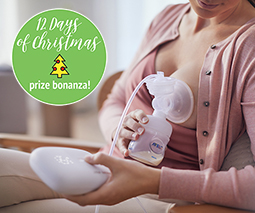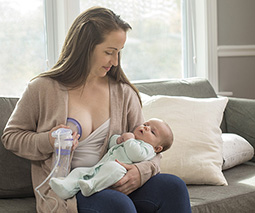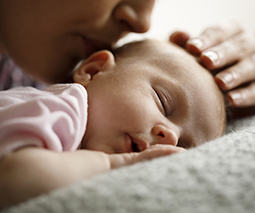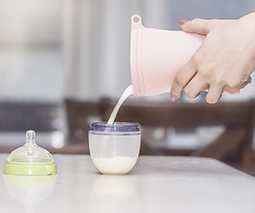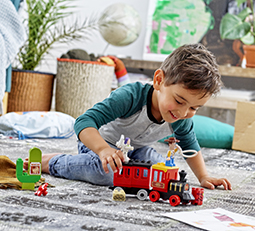23 breast and nipple care tips for breastfeeding mums with tender boobs

While breastfeeding isn’t supposed to hurt, it can be painful in the early days when feeding is being established. Blistered and bleeding nipples are no fun when you have a hungry baby who you are scared to feed (and yes, I know this firsthand).
It’s important then that you take some steps to avoid some of the things that can cause breastfeeding pain, and in the process, remove the temptation of reaching for a tin of formula when you deep down want to stick with breastfeeding.
Here are some tips and tricks to help you enjoy a happy and painless breastfeeding journey.
1. Attachment is everything
Make sure your baby has the ‘Special K’ lips when on your breast. A wide mouth where top and bottom lips are on your areola (the dark circles around your nipples) will also help your nipple to slide deep into your baby’s mouth and prevent compression.
If you don’t think his latch is quite right, try re-positioning your breast in his mouth first, rather than breaking his sucking which can cause you pain.
If you do need to break his suction to re-attach him, make sure that you insert your little finger in the corner of his lips to avoid him from pulling on your nipple.
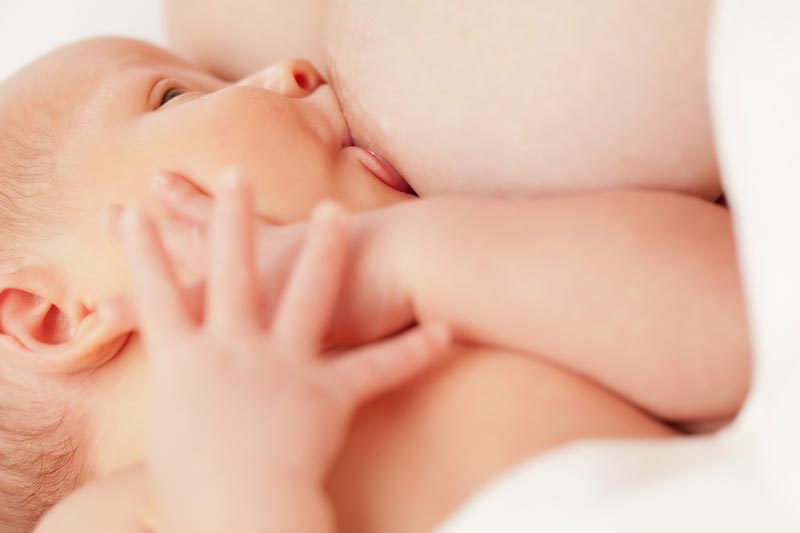
2. Break his suction gently
To prevent pain caused from unlatching your baby mid or post-feed, make sure you break your baby’s suction by doing the above finger trick to gently remove him from your breast. This will avoid your nipple from being pulled.
3. Try a different position
Sometimes your feeding position may be the root of your breastfeeding pain because your baby is unable to latch correctly in the position you have him in. Try different positions, such as lying side-by-side in bed or the football hold, where he is held firmly under your arm, rather than your usual position and see if things improve.
4. Feed from the best boob first
Your baby will have a more aggressive latch when he’s hungry, which can be painful if you have a tender nipple. Try feeding him from the side that hurts less first and then transitioning him to the painful nipple. This may give you some relief while still draining your breast (which is important for avoiding mastitis).
5. Rub some breastmilk on it
Breastmilk is magic stuff and not just for your baby. To help a cracked nipple heal faster, express a little and rub it on your nipples after a feed.
6. Massage away a clogged milk duct
A blocked milk duct is common in the early days of breastfeeding and can cause you discomfort and lead to mastitis. If you feel any lumps in your breast that don’t go away when you feed your baby, massage these out (under the shower if you like as the warm water will help).
7. Beware of the super hungry baby
The hungrier your baby is, the more aggressive his latch will be. If you have a sore nipple, try feeding your baby before he gets too hungry to make the experience kinder to you.
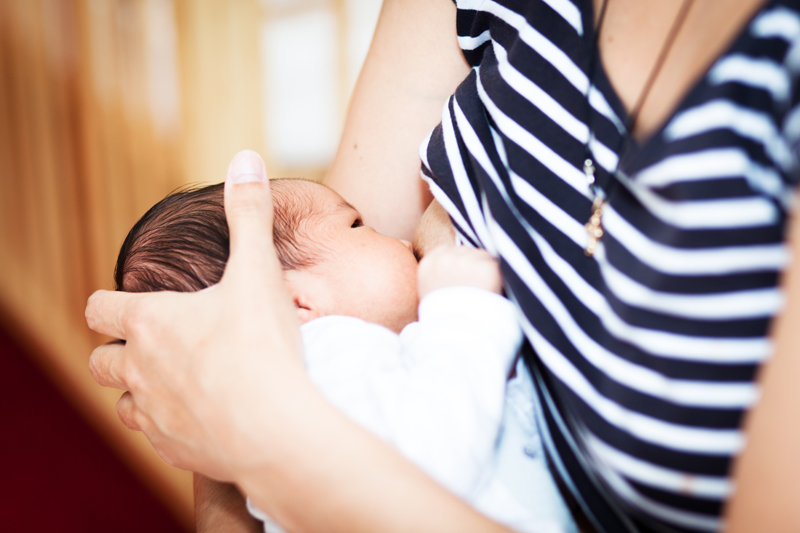
8. Check for a tongue tie
If your baby is having difficulty latching and breastfeeding and the whole experience is incredibly uncomfortable for you, ask your midwife, GP or pediatrician to check he doesn’t have a tongue tie, which could be hindering his latching ability.
9. Ice up and numb the pain
If you have a painful nipple, try rubbing some ice on it before feeding your baby. This will numb the area and make breastfeeding feel more manageable.
10. Offer your finger as a boob placebo
If your baby loves to comfort suck, try offering him your finger to suck on rather than a sore nipple.
11. Healing oils and plants
Oils such as olive oil and coconut oil are safe to leave on your breasts in between breastfeeding and can help ease nipple pain. Likewise the gel from an aloe vera leaf can help treat painful nipples. A little calendula cream rubbed on your nipples is also soothing, hypoallergenic and moisturizing.
12. Keep your girls dry
When applying creams, oils or the like, make sure your nipples are completely dry before putting your bra back on. Try going bra-less for a time and airing them. Also, make sure you change your breastfeeding pads regularly to help keep those painful nipples dry so they can heal faster.
13. Give a sore boob a break by hand expressing or pumping
Sometimes a damaged nipple just needs a bit of time to heal. Try skipping a few breastfeeds from the sore boob and expressing instead. You can still feed from the unaffected side, give your baby a bottle of expressed milk from the other and then pop him back on both boobs when you are ready.
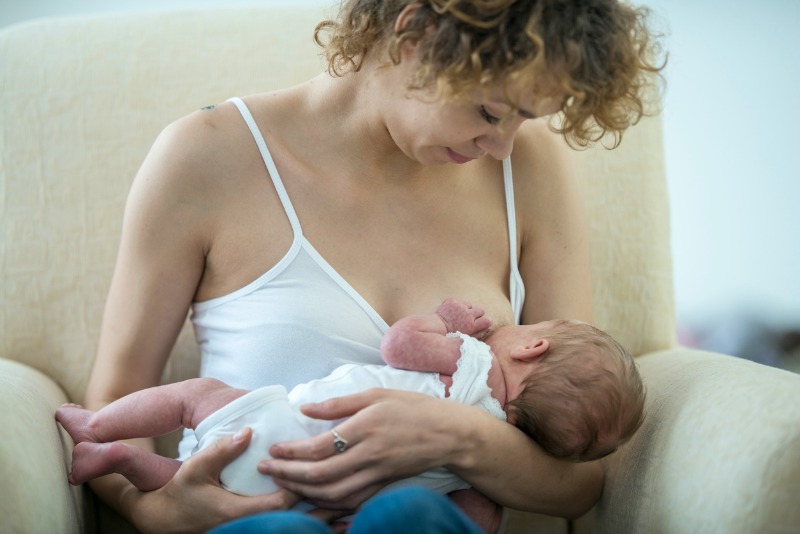
14. Use a warm compress
A warm compress such a washer soaked in warm water will be soothing on your aching nipples and engorged breasts.
15. Protect yourself with a breast shield
These plastic domes can protect your cracked nipples from being bumped and give them a much-needed chance to heal.
17. Break out the cabbage leaves
Many breastfeeding mums swear by this tried and tested hack, saying a cold cabbage leaf wrapped over the tender boob can help with engorgement and soothe sore nipples.
18. Soothing nipple creams
Sometimes a nipple cream is the answer to your painful breastfeeding woes. Lots of mums recommend Lansinoh lanolin nipple cream which will soothe and protect your nipples after a feed.
19. Salt water rinse
Salt water has many healing properties. Try soaking your painful nipples in a salt water solution to help soothe them and promote healing.
20. Soak a tea bag in warm water
Applying a tea bag soaked in warm water to your painful nipples is another pain-relief home remedy. The tannins in the tea is said to help ease pain and the warmth is also comforting.
21. Skip the soap
Do not clean your breasts with soap. This can do more harm than good by drying out your nipples and irritating any cracks.
22. Prop your baby up with a pillow when feeding
Using an ordinary pillow, or a moulded breastfeeding pillow, can help to keep your baby level with your nipple and stop him from dragging it down. You may also find this is more comfortable for your shoulders.
23. Consider a nipple shield
These are a little controversial, but you could consider temporarily using a nipple shield (pick them up from the chemist) to give your nipples some relief while breastfeeding, but chat to your baby health nurse before deciding to go this route.
